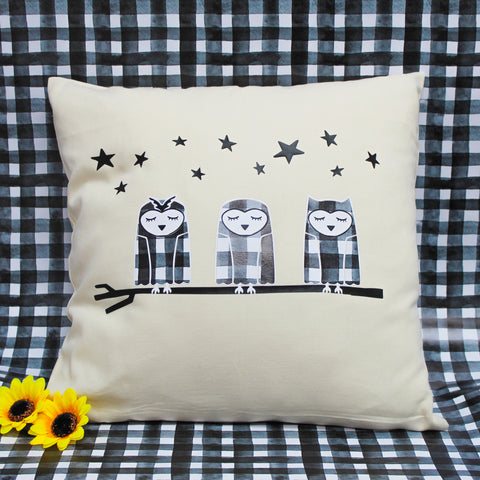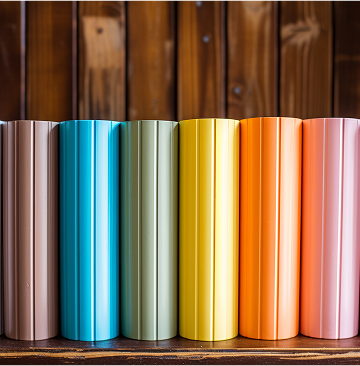 The answer is: Oranges. Bananas. Potatoes.
The answer is: Oranges. Bananas. Potatoes.
The question is: “What are things that peel?”
No, this isn’t a game show. It’s a list of things you want to peel.
The answer is: Skin. Paint. HTV.
The question again is: “What are things that peel?”
This list includes things you do not want to peel.
No one wants to experience peeling skin after a day in the sun. Nor do homeowners enjoy seeing paint peeling on their homes.
As a new or experienced crafter using heat transfer vinyl, you have likely seen or experienced the disaster that peeling HTV creates. You lose an entire project, or spend time trying to fix what happened. We have all seen designs peeling off our beloved concert t-shirts, and it’s not pretty. There are ways to prevent HTV from peeling, so not all hope is lost.
Prevent the Peel
While we do want our oranges peeled, we don’t want our skin or our HTV to experience peeling. Both are painful! Happily, you can do your best to prevent your skin and your HTV from peeling by using preventative measures.
- For your skin, remember to wear sunscreen
- For your HTV, follow the helpful hints and steps below compiled from experienced HTV application professionals
What are the preventative measures to keep vinyl from peeling? Whether you are a new crafter or someone who has been using HTV for years, the steps below can be helpful when applying heat transfer vinyl. Develop your own method using SHIP as your guide.
S.H.I.P. Your HTV
For home crafters using irons, think SHIP:
- STEAM: Do not use steam, no matter how tempting it might be.
- HEAT: Use the proper heat setting. Cotton is recommended.
- IRON: If your iron has holes (and most home irons do), try to avoid the holes spending a lot of time over your HTV. Try to press down using the center of your iron.
- PRESSURE: Use the proper amount of pressure. Even, firm pressure is what should be used, but only for 15 or 20 seconds.
You need to test that acronym for yourself, because a variation of 5 to 10 degrees sometimes makes all the difference. Home irons differ, so test some scrap HTV on some scrap material identical to what you will be using to see what works best for you.
Steam
Avoid it. Never be tempted to use it. Moisture is your enemy in this instance.
Heat
Heat is your friend when used correctly. With HTV, the desired result is that your HTV melts into the material. A way to test that your heat setting is correct is to feel the HTV (after it has cooled!) after you have finished pressing it into the shirt or whatever you are decorating.
If you can still feel the edge of the HTV, your iron heat setting was not hot enough. Increase the heat by five degrees, press, and try feeling the material again. There should not be any edge felt after you press the HTV to the material. If you keep feeling an edge after you have done a second press, then it may be an issue with the quality of your HTV or the fabric you chose to decorate. At some point, you won't be able to keep adjusting the heat and pressing the design, so do some test runs to see what works best for your item and your iron.
Iron
Choose a reliable iron brand that you have experience using so you are familiar with the accuracy of your heat settings and any adjustments you have to make to avoid placing the holes over your pattern..
Pressure
Using the right amount of pressure is another key element in successfully applying HTV so that it lasts without premature peeling. For new crafters, sometimes the tendency is to under- or over-estimate the amount of pressure that needs to be applied.
Most HTV manufacturers recommend medium to high pressure pressing for this vinyl. Experimenting is key to get the right pressure, so we recommend trial and error. Each person and each iron is different. What may be firm pressure to one person is light pressure to another. Work in increments to get the pressure adjusted to your perfect setting for your press and your strength.
Material Is Key
Material makes a difference. It’s not just the look and wear, but how it accepts the HTV that is affected by your choice of material. SignWarehouse recommends using either 100% cotton or a 50/50 blend for best results. Here are some apparel items to customize that you may want to offer your customers.
Honestly, HTV is not recommended for 100% polyester apparel, as it presents its own challenges. However, some individuals want to give it a try. If you do choose to apply HTV to 100% polyester items, use extra caution. The amount of pressure and heat necessary is affected by the fact the material is 100% polyester.
If you ever ironed your own clothes, you know from bad experience that polyester is susceptible to shiny spots or press marks. And once they are there, you’re stuck. They will make your item look homemade and not professional. That is not the impression (pun intended) you want to give, so you may want to avoid, if at all possible, 100% polyester items.
Time
Give yourself time, especially if you are new to using HTV. You will not be an overnight expert, partly because of working out the SHIP balance above, and partly because of the material you use and the time you invest in learning. Don’t skip steps or rush the process. Even Michaealangelo likely had a few sloppy paint strokes at first. One thing about good old Mike is that he was an expert at what we now call journaling. Notes from projects, his planning, his sketches - all of these helped him improve his skills. So take a lesson from him and take notes. What worked? What didn’t work? What temperature and pressure did you successfully use for X material?
Explore the many types and options for HTV available from SignWarehouse. There are traditional and printable heat transfer vinyls available for your apparel and decor projects.
Post-Application Care
Now you’ve done it! You have created the perfect washable item using HTV. What can you do now to keep it in shape, and what tips can you give your customers?
Wash and Dry It Right
Don’t go crazy and go from application to cleaning. Give the HTV and material time to really bond.
- Do not wash the t-shirt (or whatever item you applied the HTV to) for 24 hours after application
- Turn the item inside out so there is not friction with other items or the machine
- Wash with MILD detergent on cold or, at the most, with warm water (this is going to be determined by the temperature your washing machine has, based on your hot water heater temperature. It is best to start with cold water.)
- NO NO NO bleach, fabric softener, or dry cleaning fluids.
- It is best to air dry, but if you just must, use the lowest heat setting on your dryer, and don’t over dry.
There is no guarantee that even with the best of care, your HTV will not eventually peel. But your efforts ahead of time to choose the right material, pick the right heat setting, and apply the right amount of pressure will help ensure your results continue improving over time until you become the go-to personal for HTV items.
Professionals and Advanced Crafters Using Heat Presses
Though the S.H.I.P tips in this article do not apply to heat presses, sometimes advanced crafters choose to use heat presses when applying HTV. Also, professionals using HTV sometimes need to upgrade or replace equipment. They know that choosing the right heat press is key.
We can still help! View the heat presses and accessories SignWarehouse recommends for individuals working with heat transfer vinyl. Yes, you can keep vinyl from peeling!




































